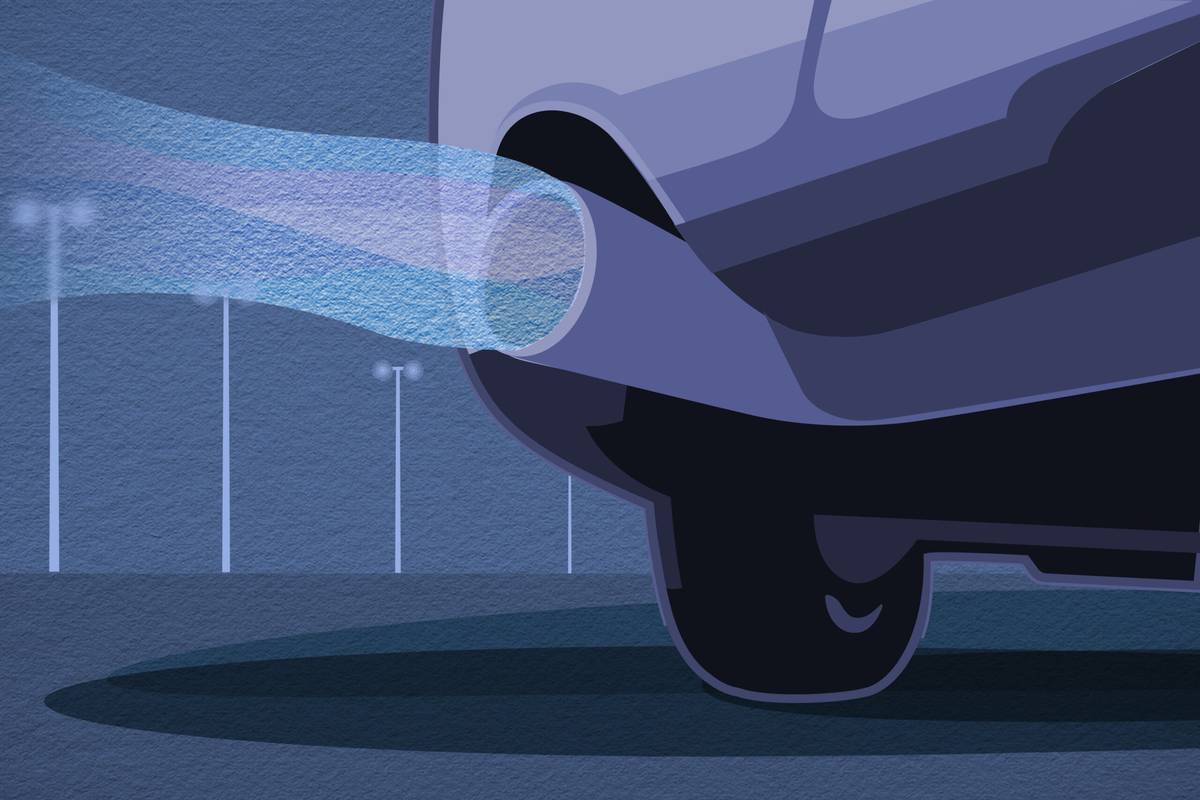Why Do Car Exhausts Smoke in Cold Weather?

White, wispy exhaust smoke when you start your car on a cold day is usually perfectly normal as long as it goes away after a few minutes. But what causes that exhaust smoke when the temperatures are cold outside, and when should you be concerned about it?
Related: How to Tell if a Car Has an Exhaust Leak
In a word, it’s caused by condensation — in two separate events. It’s similar to why you can see your breath on a winter day: The humidity in the warm air you exhale condenses into a fog when it hits the cold outside air.
When you shut your engine off, there’s hot air in the exhaust system, and any humidity in that air condenses into water droplets as it cools down. When you start the engine back up, the hot exhaust gas evaporates and collects the water as vapor, and as it hits the cold outside air, that vapor condenses again into sort of a wispy cloud. When the exhaust has evaporated all the water in the exhaust system, there’s no more wispy cloud.
What Might Not Be “Perfectly Normal”
If your car’s exhaust smoke is still white (and perhaps more dense) after the engine has warmed up, that could mean something else — and it’s not good. The smoke is still coming from water in the exhaust, but in this case, the water is likely coming from your car’s cooling system.
The cooling system typically contains a mixture of water and antifreeze, commonly known as coolant, which (along with the radiator and other parts) help keep the engine from overheating. The coolant flows through passages primarily in the engine block and cylinder head, with the mating surface between those two parts sealed with a head gasket. One of the head gasket’s jobs is to keep the coolant from getting into the cylinder where the air-fuel mixture is being burned.
However, the head gasket doesn’t always do its job. If it fails, coolant gets into the cylinder and is burned along with the air-fuel mixture, and it exits the exhaust as a thick white cloud that doesn’t go away. This not only makes you lose coolant, it can also ruin the engine.
But particularly in winter, there could be another cause for coolant getting into the cylinder. This one isn’t good, either: If there isn’t the right amount of antifreeze in the coolant and it gets really cold outside, the coolant can freeze and expand. If it does, it can crack the engine block or cylinder head, allowing coolant into the cylinders when the engine is started. This will result in the same thick white cloud … and the same ruined engine.
One fun fact: Though it defies logic, water freezes at 32 degrees Fahrenheit, and a 50/50 mix of water and antifreeze freezes at about -35 degrees, but straight antifreeze freezes at only about -5 degrees. (A 70% antifreeze mixture has the lowest freezing point, which is below roughly -60 degrees.) So the old saying that “if some is good, more is better” doesn’t always hold.
More From Cars.com:
- What Is Coolant and Is It the Same as Antifreeze?
- What Are Common Exhaust System Problems?
- How to Check Your Car’s Engine Coolant
- Should the Exhaust System Last the Life of a Vehicle?
- More Service News
Related Video:
Cars.com’s Editorial department is your source for automotive news and reviews. In line with Cars.com’s long-standing ethics policy, editors and reviewers don’t accept gifts or free trips from automakers. The Editorial department is independent of Cars.com’s advertising, sales and sponsored content departments.
Featured stories




